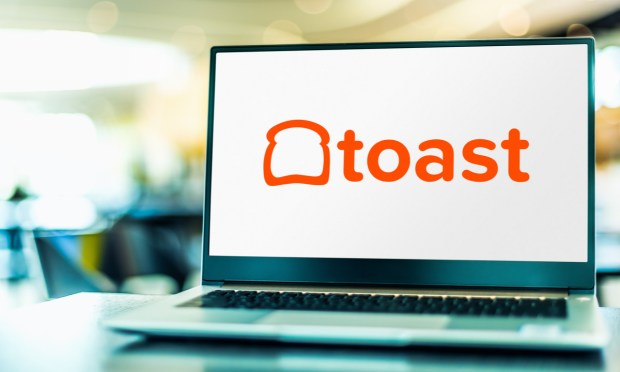Toast Woos SMBs With Pricing Tools, Courts Major Chains With Data Analytics

As restaurant technology providers compete for eateries’ loyalty, small independents and major brands are looking for different capabilities and features, Toast noted on its latest earnings call.
The cloud-based restaurant point of sale (POS) platform, which has a presence in around 85,000 restaurants, shared on a call with analysts Tuesday (May 9) the company’s first quarter 2023 financial results that small, independent eateries and major chains have very different tech needs right now.
“In the small SMB space, we’re optimizing pricing and packaging to meet the needs of that customer segment and leveraging an eCommerce sales motion and self-service onboarding to efficiently grow in this segment,” Toast Chairman and CEO Chris Comparato said.
Certainly, pricing is key for small and medium-sized businesses (SMBs) in their struggle to compete with major chains for consumers’ loyalty. Research from PYMNTS’ study “The Digital Divide: Technology, Customer Service And Innovation In The Restaurant Industry,” for which we surveyed nearly 2,400 consumers, revealed that 18% of diners visit chain restaurants three times a week or more, while only 11% said the same of independents. Similarly, 38% visit chains once or twice a week, while only 33% do so with independents.
Pricing is especially relevant to driving that loyalty in today’s inflationary environment, and tech that offers more visibility into pricing can help small eateries better compete with industry giants.
Research from the December edition of PYMNTS’ Restaurant Digital Divide study, “The 2022 Restaurant Digital Divide: Restaurant Customers React To Rising Costs, Declining Service,” which draws from a survey of more than 2,300 consumers who regularly purchase food from restaurants, noted that 4 in 10 restaurant customers stated that price influenced where they purchased their last restaurant meal.
This figure has likely only increased in recent months, as restaurant price inflation has surpassed grocery. The latest U.S. Bureau of Labor Statistics (BLS) data reveals that, in March, restaurant prices increased 8.8%, while grocery prices only rose 8.4%. This marks the first time in this period of high inflation that restaurant inflation exceeds that of grocery as well as the first time in years that grocery prices fell month over month (-0.2%).
Conversely, Comparato noted that larger chains are looking for different qualities in their tech partners such as the ability to easily access data insights across locations.
“In the first quarter, we signed a 300-plus-location national QSR [quick-service restaurant] chain that wants a more innovative technology partner with top-notch integration functionality, ease of use, and better overall reporting visibility across its entire operating ecosystem,” Comparato said. “The breadth of these customer wins are clear examples of … the range of customer sizes and types that we can serve.”
Overall, one of the key differentiators for restaurant technology providers right now is the extent to which they can simplify restaurants’ technology stacks, integrating solutions into a central platform rather than leaving operating to rely on a range of disparate, incompatible tools.
To that end, in recent months, Toast announced in the quarter the launch of reservation and waitlist management solution Toast Tables, including an integration to enable booking directly through Google.
In the quarter, the technology company also announced that it was integrating Order With Google into its platform, allowing restaurants to unlock a new channel for orders. The company also shared that it has acquired digital drive-thru signage company Delphi Display Systems in an effort to boost its QSR offerings.

